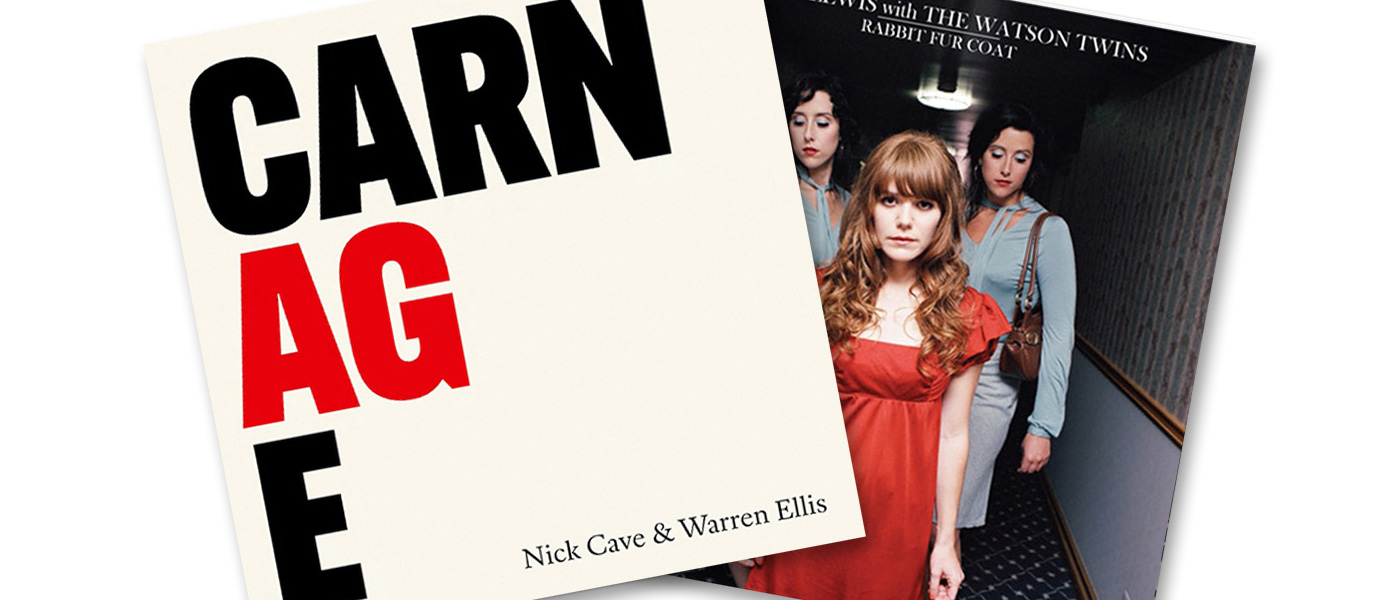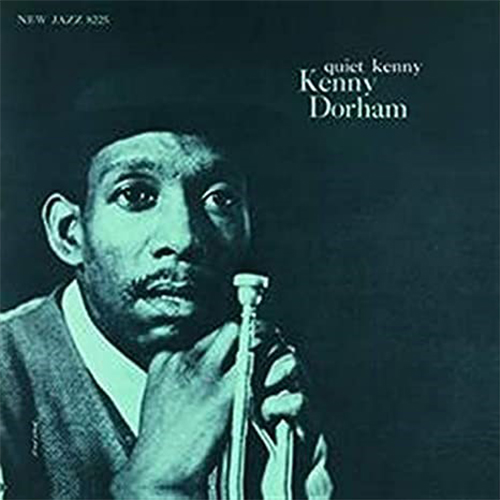
My most recent Record Store Day experiences have been of the online variety. Not my favorite way of doing business, especially on the most wonderful day(s) of the year, but clearly adjustments needed to be made in recognition of, you know, the worldwide pandemic. San Francisco was just on the cusp of its 2021 Grand Reopening when the RSD June 12 event rolled around. Missed it by less than a week. So my local independent retailer utilized a format wherein people lined up before opening, as usual, but this time customers checked off their wishlist forms and handed them back to store staff to fill the orders rather than scurrying around the store with an actual shopping basket. Or a suitcase, or a forklift.
Here’s the problem with all that: with this format, some buyers would inevitably check off any title they were considering. But they might not necessarily opt to purchase all of those items once at the register. The staff made it clear that you would not be obligated to do so. Some titles were almost certainly left at the counter. They might have shown as available in the computer’s inventory, but how would staff locate them during the heat of RSD battle? For example: if someone checked off the last of the Kevin Gray-mastered, all-analog mono reissue of Kenny Dorham’s Quiet Kenny by Craft Recordings but left it at the register, how would the staff know that one was actually still available for the next person who wanted one?
The above scenario might have been germane to my experience. Quiet Kenny was my most anticipated release for this event and the only one that I was unable to purchase at the store. I had to go the online route, and it was not a smooth process. But I got my copy. I’m not complaining about that.
This record has been released by reputable companies before. Analogue Productions did a stereo version, also with Kevin Gray at the nobs, as recently as 2017, but I must not have been paying attention. This is a shame because people have gotten $225 for them, and now they want $300. Those were pressed at QRP. The RSD Craft Recordings discs were pressed at RTI, and the internet was instantly alight with pressing complaints, mostly about the second side. Oddly, some commenters seemed to think that defective copies came packaged with different inner sleeves than the more chaste discs did. I was grinding my teeth when I first dropped the needle on side two, and… eventually just forgot about the whole thing. Everything was going great, and then… it found me. They were right all along. And I felt like I was in one of those disastrous State Farm commercials with Chris Paul.
Secrets Sponsor
Quiet Kenny was the first recording by Dorham’s late-career quartet consisting of Paul Chambers on bass, the great Tommy Flanagan on piano, and Arthur Taylor on drums, and, as the title implies, it features mostly ballads. Sonic bubble baths, in fact. But the band comes out swinging on the hard-charging “Lotus Blossom.” Dorham, appropriately, takes the first solo after an ensemble intro. When Flanagan follows him up, the lid flies off, and the room starts to smell like candied yams and cognac. But the band settles into the tub immediately after and stays there for the rest of the runtime. Taylor’s brushes and Dorham’s melodies hold hands and share an umbrella under Flanagan’s warm afternoon raindrop notes during “My Ideal.” Chambers shows up on “Blue Friday.” His lines really get in your chest, and by now, these mellow grooves have caused you to forget how hot things got at the start.
The bliss continues throughout side two until you get to “Old Folks.” That’s when the pressing defects become obvious. There are 45 seconds of relentless agony right at the end of the program. Misery. The rest of my copy plays great, but I might skip listening to the final song. Or I might not keep the record because I’m unsure of how often I’ll reach for a defective Kenny Dorham disc when I have several other flawless Dorham titles to choose from.
People want this record. A lot. And I want records that are well-made. Ones that don’t cause my stomach to hurt. I was surprised by how fast it went and by how much people are asking (and occasionally getting) for it online. There’s a lot of speculation that this is not a true mono mix, but a “fold-down” of a stereo mix. It sounds great to me. I’m hoping that Craft reissues a stereo version soon in the same way that they followed up their RSD exclusive Chet Baker mono titles with wide releases of the stereo takes. Hopefully, RTI doesn’t botch the next job. They’re typically great.
**NOTE: Only two ratings points were deducted for the pressing defects because the issue is contained in a single, relatively brief section of music. But the problem is egregious, and potential buyers should know that other buyers have reported similar issues across the entirety of side two. Do some research before paying scalper prices, folks. Or wait for the next reputable reissue of this great work.
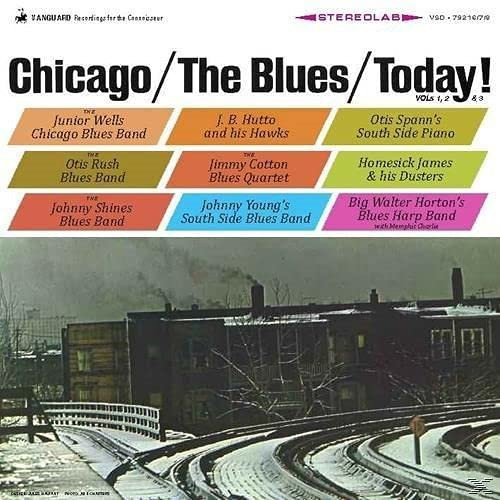
Today, when you think of Chicago Blues, you’re as likely to envision some guy that looks like Groucho Marx brandishing a harmonica in a silk suit and fedora as you are to picture Muddy Waters sitting on a stool commanding a room and everything that had ever come near it. Like all others, the genre became more bloated and less distinctive in a manner commensurate with its increased commercial viability. A 1966 three-volume compilation called Chicago/The Blues/Today! may have been at least partially responsible for that enhanced visibility. Craft reissued it for RSD. To paraphrase Fat Possum’s marketing slogan from a few years back, this is not “the same old crap.” It’s downright joyous, in fact. Mostly.
The program starts with a few songs from the Junior Wells Blues Band featuring Buddy Guy on guitar. He’s a little buried in the mix excepting his solos during “All Night Long,” which are indicative of an especially vibrant talent in his early throes of artistic exploration. His lines are certainly more fluid than those of most other guitarists on the set, but the barn hasn’t been quite burnt just yet. Wells’s voice and harp, however, are all the way in the room. They’re right in front as he tosses off lines from both with the knowledge that he’ll never lack for riches from either. His personality shines brightly through both his playing and his dialogue, which he speaks into the studio mic exactly as if he were addressing a live audience.
And that’s just the beginning. There are nine bands featured over the course of the three records, and most have something you can latch onto and savor. Despite the sound’s urbanization, one can still hear plenty of front porch grit in the grooves that J.B. Hutto and His Hawks produce. Jimmy Cotton’s harp sounds like it’s been weaponized, his playing more precise and musical than Junior Wells’s. It’s immediately obvious that Zeppelin pilfered much of their take on “I Can’t Quit You Baby” from the Otis Rush Blues Band, the only group that thought to bring a saxophone to this dance. And the only one with a rhythm and lead guitar attack too. In this setting, both of these instrumental anomalies seem way less exotic and less Rock ’n Roll than does Johnny Young’s mandolin. I thought I remembered reading that Johnny Shines had ridden the rails with Robert Johnson, and was all but convinced of it when I first heard “Dynaflow Blues,” which is a lyrical and structural mash-up of a couple of songs popularized and attributed to Johnson. But with bass and drums. And electricity.
For me, Otis Spann’s set is the show’s highlight. His playing, more so than his singing. Spann is my favorite of all of Muddy’s sidemen, and his five songs here will show you why. Hearing him blow the lid off his piano with just a drummer for company is like riding a high octane motorbike without a seat. But there’s some noise in the pressing throughout, and it’s especially noticeable during the Spann selections. Sounds like a bug keeps flying into your ear. We can thank MPO for that. There is the occasionally repeated offense over the course of the six sides too, but they were mostly alleviated with a scrubbing, vacuuming, and another run through the Degritter. That technology is expensive and shouldn’t be required for peaceful listening. I didn’t buy multiple record cleaning machines because I could afford them. I bought them because I’m irresponsible. But most folks aren’t. And, without them, I would not have retained this set, and that would have been tragic. It’s worth noting that online commenters are universally blown away by the quality of this release. I’m the only one that was not. Whatever that says about them or me is difficult to parse. My copy was noisy out of the wrapper. I know that much.
I’m thrilled that I was able to save this set though. Absolutely. It makes you feel like you’re with Mick and Keith and Brian sitting around a single speaker trying to grasp all this feeling and sweat and blood and pure energy. It’s best enjoyed with others, and it plays as well in the daytime as it does at night, but it starts to make more sense the later it gets. The hype sticker claims “all-analog mastering from the original stereo tapes by Kevin Gray at Coherent Audio.” Three thousand were made for the whole wide world. Still available online if you dig. I suggest you do. Just be prepared to do a little work to get the sound right, or you’ll, sure enough, have the Blues.
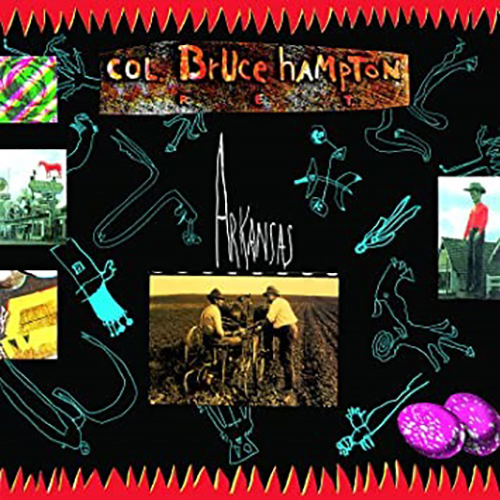
And now for something completely different…
Have y’all heard of Col. Bruce Hampton? I found him in the early ‘90s when he was fronting the Aquarium Rescue Unit, one of the baddest bands I’ve ever seen play. Most of the individual members would go on to greater renown in the Allman Brothers Band (Oteil Burbridge, bass), Widespread Panic (Jimmy Herring, guitar), and Leftover Salmon (Jeff Sipe, drums). Bruce just kept doing his thing until he passed away on stage in 2017, surrounded by musicians he’d collaborated with and influenced while singing his favorite song, which was also the first song that he’d ever performed live. True story. He also guessed my birthday once on the first try. Terminus Records reissued his Arkansas album for RSD in June. It was originally released in 1987, but no one seemed to care. Which makes sense if you consider that he released one of the worst-selling albums in Columbia Records history as a member of the Hampton Grease Band. So it goes…
Arkansas has some genuinely great playing on it, but it’s kind of obscured by all the weirdness. Guests include modern Blues stalwart Tinsley Ellis and Little Feat’s Paul Barrere, both on guitar. But what sticks with you most are the thin horns, the jazzy chords, ‘80s synth sounds, spastic guitar lines, and nonsensical dialogue throughout (see “Brato Ganibe” as Exhibit A). “Arkansas,” the song, feels like some combination of a gaudy Jazz lounge and a local, late-night gameshow. You kind of expect that lady from the David Lee Roth videos to pop out of the backroom and try to sell you cigarettes and candy. “Strange Voices” shares textures with the Ghostbusters theme song. Musical cousins, if you will. Birds of a strange feather.
Hampton’s quips, gestures, routines, and imagery mixed and merged with each other across a million projects over the course of his decades-long career. I haven’t seen it in years, but I remember Hampton’s monologue during Sling Blade as an amalgamation of all his “brato ganibe” and “cheese frog” talk. Not unlike what you’ll find scattered across this album. “Throndossull” would reappear during Bruce’s Aquarium Rescue Unit years as “Trondossa,” and now there’s an annual music festival in Charleston, South Carolina of the same name. Hampton’s cover of “Fixin’ To Die” might be the straightest song on Arkansas. It and “Basically Frightened” would reappear as highlights of the Aquarium Rescue Unit’s debut live album for Capricorn records in 1992.
I’m stoked to have a copy of Arkansas after all this time, and I’ll actually listen to it sometimes, I feel certain. But the highlight of the reissue, for me, is actually not the original album. It’s the two bonus tracks attached to the end that feature the Rescue Unit. I’d imagine these are the lineup’s first studio recordings. “Morgan” is a brief instrumental with Jeff Mosier helping out on banjo. There’s not a whole lot there. But “Cold Mountain” points towards what’s to come with Herring’s signature leads and the ensemble’s deft skill on display throughout. It’s like a post-credits seen in a Marvel movie. Gets you good and primed for future endeavors.
Arkansas won’t be for everyone, but it’s worth seeking out if you’re at all a fan of Hampton’s or if you’re interested in learning more about one of the biggest influences on the ’90s Jam Band scene. Members of Widespread Panic, Phish, and Blues Traveler will all hold forth about Hampton for as long as you’ll listen. The RSD version was pressed at Kindercore, and it’s as good as it’ll likely ever be. This one for the sonically intrepid. Good luck. And brato genibe.
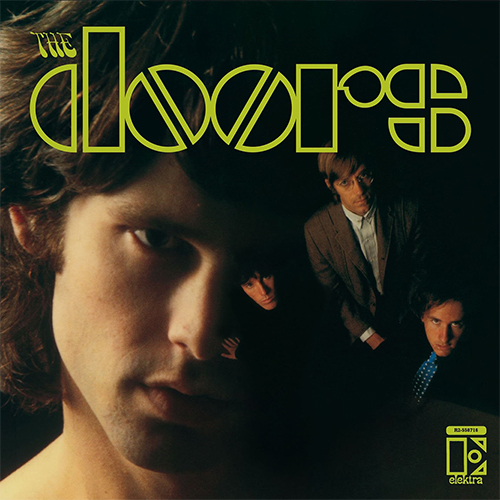
Vinyl Me, Please reissued the self-titled debut by the Doors as their Essentials Record of the Month recently. The extended liner notes by Jeff Weiss explain that he “had a Doors poster on his wall in the 8th grade and harbors no regrets about it.” I can do better: my bedroom wall displayed an American flag with Jim Morrison’s visage squarely in the middle of it while he was wearing, no kidding, a crown… of thorns. To be clear, I recognized the ridiculousness of the arrangement even as a fourteen-year-old. I was neither excessively patriotic nor so enamored of Jim Morrison that I would place him at the center of my spiritual practice. I just liked the way that the flag held the light from my neon Miller Lite sign when I fired it up in my bedroom window.
And I loved the Doors. I’d later think of Morrison mostly as some sort of self-important Holy Goof, and then I’d forget about the band for many years. Later, I’d circle back for LA Woman, which I’ve always loved, and land closer to the middle of my fandom, where I am now. I think the Doors’ two greatest studio albums bookend their others, and that those can be supplemented with Alive, She Cried as an example of what the group could do at peak powers onstage. I’ve always sort of wondered if the band was ever truly great or if I just found them when I was especially impressionable and eager to escape the radio of my youth. The Doors clears all that up without question.
The experience is immediate like we’re communing with the band. (I mean, to the extent that any typical 47 years old would want to “commune” with an early-20s version of Jim Morrison.) And it happens right away. “Break On Through” obliterates any residual concerns I might have had about whether or not the band’s import is overblown. Eight of the eleven performances have much to recommend them, and the jam during “Light My Fire” is outright transportive. Even when sober. It’s easy to get creeped out by Morrison’s grunts and yowls to start the band’s cover of Willie Dixon’s “Backdoor Man.” The sounds are disquietingly primitive, guttural, and raw. What type of impression would this have made in 1967?!
Secrets Sponsor
There is some filler, especially on side two. Which is understandable considering the condensed timeline containing the band’s formation, their signing, and the release of this, their first long player. “Backdoor Man” and “The End” sandwich three much less memorable pieces. “Take It As It Comes” sounds like the soundtrack to a late-60s Hippies movie. But the rest is undeniably fantastic as long as you divorce the sounds from the images of Morrison pouting and prancing and belching and bludgeoning his way through the maze of early-era superstardom that would have ruined, or at the very least completely disoriented, most any young Rock ’n Roll Hellraiser of the time.
It’s all right in front of you. Shot in extreme close-up. A fiery carnival ball. A carnivorous cacophony. There’s some fuzz throughout, which at first seems like inner groove distortion except that it can be heard at the beginning of the second side, too, so I think the issue is related to the master tapes. The arpeggiated notes during “The Crystal Ship” lack detail and definition. The ones that begin “The End” do not. This release was remastered from the original mono tapes by Bruce Botnick, the band’s studio engineer, and the lacquers were cut by Bernie Grundman himself. It was pressed at GZ, but it’s hard to know at which facility as there seems to be at least a couple by now. There’s a little noise in the pressing, which is not noticeable during much of the program but is apparent between songs. It’s so subdued but so consistent, that it almost seems like an effect. Like a deliberate attempt at manufacturing a “used” record. I think the record is a blast despite, at times, perhaps because of, its imperfections. I doubt it’ll ever get any better. I’d jump now if I hadn’t already.
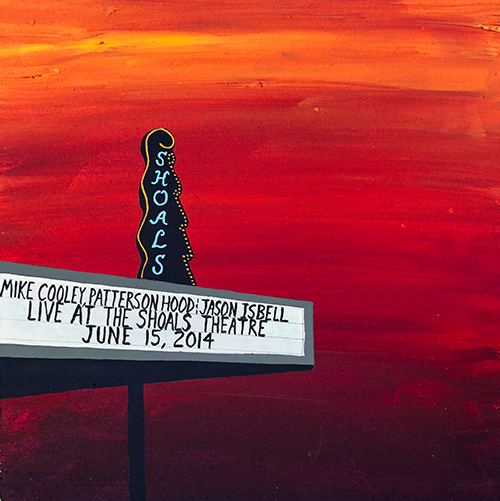
I am a Drive-By Truckers completist. I spend more time than I’d care to discuss keeping up with release schedules and ensuring that I’ve not missed anything. While Live At the Shoals Theatre is not technically a DBT release, any fool on the corner will tell you that it counts. If an onstage reunion of Mike Cooley, Patterson Hood, and Jason Isbell didn’t, then nothing would. This one was recorded live on June 15, 2014, in Florence, Alabama, the town that will also host Isbell’s own Shoals Fest this October with the most compelling festival lineup that I’ve seen in forever. The Shoals performance was a benefit for a friend of the musicians who’d had a stroke. It was the first time that Isbell had played with the others in seven years. One might expect an equally heartfelt reunion at the forthcoming festival, but with the added weight of electricity. I won’t make that one, and I didn’t make the Shoals show. But Live at the Shoals gets me close enough. And I don’t have to fly. Not on a plane, anyway.
The set-up is simple: three badasses with their voices and acoustic guitars. There’s banter, on and off mic, leading into show and album opener “Tornadoes,” the first of two consecutive tunes from The Dirty South. Right away, the acoustics sound less electrified than the ones referenced in our review of the DBT Austin City Limits release. There’s a lovely mix of strumming and picking and snarling and grinning with the first solo during “Decoration Day” feeling especially camp-fiery. Sober Isbell’s harmonies are more musical and certainly more precise than Town Drunkard Isbell’s contributions to DBT’s performances from the band’s Golden Era. Hood’s are more in line with the Keith Richards caterwauling approach, and, in this case, the melodies are often more precise than the lyrics. This is no Hollywood production. It’s a make-up free stage performance in high definition. There’s no hiding the fact that Cooley’s lyrical recall self destructs during “Self Destructive Zones.”
If I could only keep one of the four records, I’d choose the second one for preservation, easy. It’s the furnace in this set’s engine room. A kaleidoscope of emotional occurrences. “Puttin’ People On the Moon” is somehow even more menacing and dire when stripped. “Marry Me” feels like a front porch stomp-along, more akin to its Decoration Day presentation than Cooley’s solo fingerstyle run through on his own solo LP. There’s a gut punch run through “Goddamn Lonely Love,” perhaps my favorite ever Drive-By Truckers tune, then an equally fraught “My Sweet Annette” that kind of creeps up next to you like that damn ghost on the haunted house ride at Disney World. “Women Without Whiskey” completes the heartbreak triumvirate. And this was a Father’s Day performance so I find the inclusion of “Outfit” and “Daddy Needs a Drink” (consecutively) to be especially thrilling. The biggest challenge to getting lost in the experience is fighting the desire to sing along or to abandon the listen entirely to go play music yourself. It’s an inspiring piece of work.
And it’s easy to feel the gravity of this event while listening. The importance of the show’s beneficiary to the individual players. The summing up and accounting of the senior players’ experiences with the venue itself. And most obviously, the reunion of the three songwriters on stage. Isbell had already received his first Grammy nomination at this point, and the Drive-By Truckers clearly had miles of road in front of them and a surplus of fuel. Everybody won in the end.
For fans, this is essential. For newbies, it’s a fine enough introduction but clearly not representative of what these three could do when plugged in and fired up. For that, I’d start at the beginning with Decoration Day. There’s a little crackle in the Shoals pressings, but softly and sporadically. Very few repeatable issues over the course of the set’s eight sides. A download code is included, which is great because this will travel well on road trips and campouts. It’s an indy record store exclusive. Don’t wait. You’ll “should’ve” all over yourself if you do.


